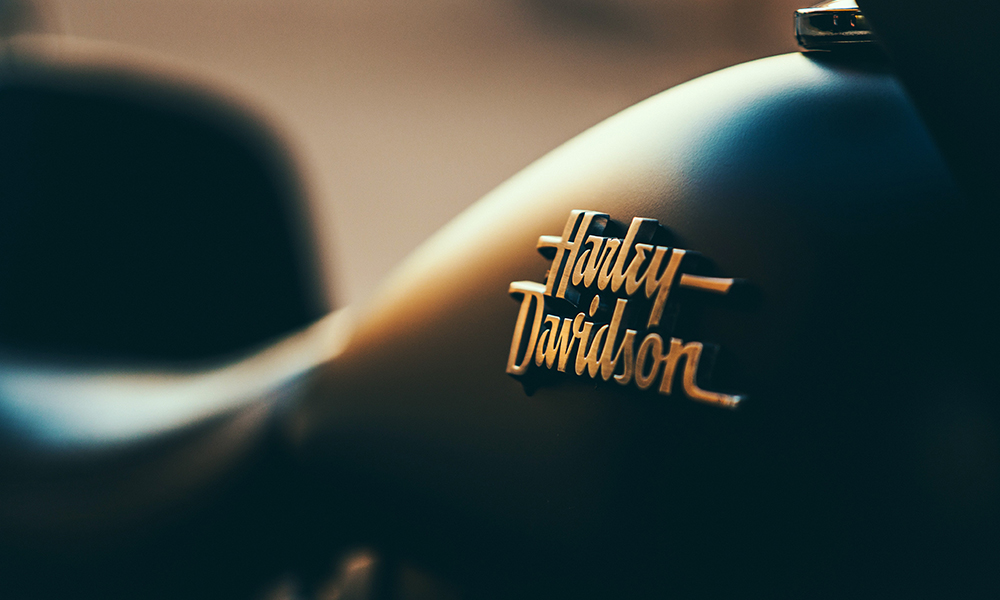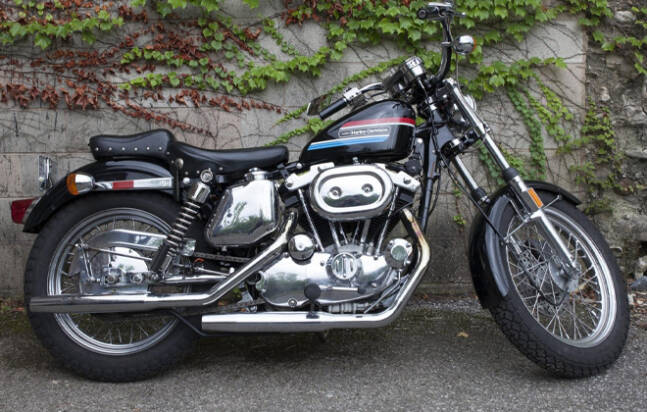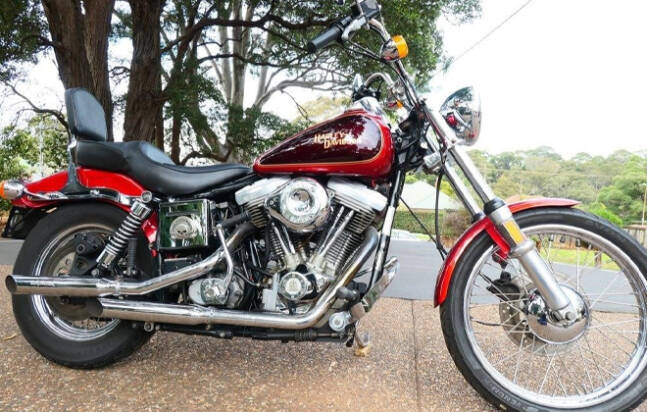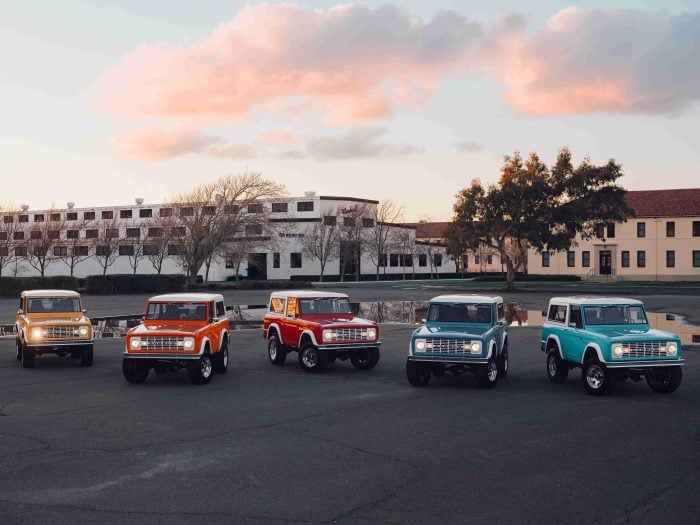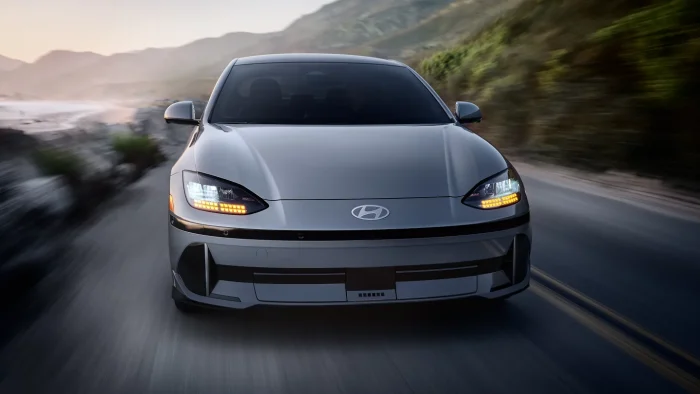When it comes to motocycles, so long as your knees are in the breeze and what you’re riding keeps you smiling, I don’t care if it’s an old Harley Knucklehead chopper that does it or a Vespa scooter. You should ride whatever calls out to your soul, and that’s really all there is to say about it.
But me personally? I’m a Harley guy through and through. I’ve owned, ridden, and built other motorcycles, but I got bit by the Harley bug early on in my riding career and I’ve stuck by the MoCo. ever since.
And I’ve owned and ridden everything from Sportsters to Cone Shovels to Twin Cams and damn near everything in between. I’m currently building a top-breather Evo chopper with a ratchet top four-speed and all the other “tuff guy” chopper bro goodies. So you could say I know a thing or two about Harley-Davidson motorcycles.
Harleys come in all shapes, sizes, and budgets, and they all have advantages and disadvantages. The following is a list of a little bit of everything. All of these Harleys can be had without breaking the bank, with an eye toward making sure you’re not getting yourself a lemon (yes, even my beloved MoCo. has had its fair share of those).
The biggest myth about Harleys is that you need to be a millionaire to own one. All you really need to know is what to look for.
It’s also worth noting that the deal you can wrangle up on a Harley has a lot to do with the time of the year (avoid buying a bike during riding season), where you’re looking (the bikes you’ll find in, say, California, are going to differ drastically from what you’ll see down in like, West Virginia), and the seller (someone who just wants the bike to go to a good home versus someone who’s looking to make a buck).
But, if you follow this guide, you’ll find your huckleberry.
1975-1985 Harley Ironhead Sportster
If you want to talk about affordable Harleys, you won’t have to wait long at all for someone to bring up the old Ironhead Sportsters. Harley made the Ironhead motor from 1957 all the way up until 1985, but there are some key differences between some of the years that affect just how “affordable” these bikes are.
Until 1974, Sportsters were right-side shift bikes, which means exactly what you think: your brake pedal is your left pedal, and your shift pedal is your right pedal. While collectors have recently started going crazy for the older Sportsters, the 1975-1985 Ironheads have always been considered the workin’ man’s Harley.
Parts are plentiful and inexpensive for these bikes, which is good because you’ll probably be buying them constantly just to keep this thing on the road.
See, affordability can be a double-edged sword. Since Ironheads have always been considered affordable, a lot of these old bikes have changed plenty of hands over the years. And, as someone with plenty of experience un-screwing up someone else’s screw-ups, I can tell you that you’ll seldom find a nut or bolt on a Sportster motor that hasn’t been touched, replaced, stripped, etc. from a previous backyard mechanic.
You can routinely find later Ironhead bikes for a couple grand or so, but expect to spend a lot of time (and money) wrenching over riding.
1985-1986 Softail or Wide Glide
These years might seem pretty specific, but it’s for good reason. The 1985/6 years were very weird for the MoCo. They were essentially phasing out the Shovelhead in order to replace them with their brand new Evolution motors (which many people–myself included–consider to be the best motors Harley-Davidson ever made).
But for just these first couple of years, Harley put these Evo motors together with their older four-speed transmissions that also had kick-starters. So, if you’re looking for something to build a chopper out of or just want that classic Harley kick-start experience with all the excellent reliability and quality features of the Evo motor, the only way to get it (from the factory, that is), is by sourcing one of these early year Wide Glides or Softails.
The cool thing is that they’ve primarily stayed under the typical “Harley Rider Price Gouging” that a lot of other Harleys have experienced. I’ve seen them for as low as $3,500, but they typically hover around the $5,000 mark, give or take.
1990 And Up FXR
Harley didn’t really make a bad FXR. In fact, the FXR has a cult following of riders who wholeheartedly believe they’re the best-riding Harleys that ever left the factory floor.
There’s a lot to unpack there (frame-mounted swingarms, direct-to-frame engine stabilizers, blah blah blah), but all you need to know is they handle damn good, they came with Harley’s bullet-proof Evolution motor (except the 1982 to 1984 FXRs, which came with Shovelheads), and you can still find stockers for $4,000-6,000 depending on where you look and what time of year it is.
I recommend looking for the 1990 and up FXRs because, in 1990, Harley switched from a tapered main shaft in their transmissions to a splined one. There’s nothing really wrong with a tapered shaft, but people view them as a weak spot because they can’t really hold up to big power. So, unless you’re building a race bike, you should be fine.
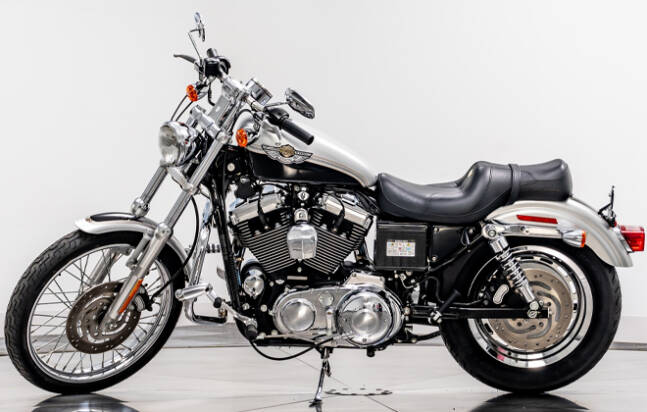
1991-2003 Sportster 1200
In 1985, Harley retired the Ironhead and introduced their Evo Sportster to the market. The motor was so perfect that they literally didn’t change it for almost 40 years. You’ll see the same motor in a 1988 Sportster as you would in a 2018 Sportster, save for some tiny differences. The MoCo. took the old “If it ain’t broke, don’t fix it” adage seriously, apparently.
Anyway, from 1985 to 1990, Sportsters came with four-speed transmissions. In 1991, however, Harley equipped them with five-speeds, which completely changed the way these scooters ride. And after 2003, they went to rubber-mounted frames, which are great and run super smooth, but also offer a lot less opportunity in the way of customization.
You won’t really find a bad Sportster of any year, but the 1991-2003 years were the sweet spot–especially if you’re looking for a bike to customize and make your own. The aftermarket parts selection for these bikes is incredible, everything can be had cheap, and if you break it on a Sportster, you can probably fix it with hand tools in your garage.
It’s also worth noting that the Evo Sportster came with two different motors from the factory–the 883cc and the 1200cc. You can get an 883 super cheap (I’m talking under $2k cheap without looking too hard), but they leave a lot to be desired (which is why the aftermarket 1200cc kit scene is so popular). It’s easier to take your time and hunt for a deal on a 1200 than buy an 883 for peanuts and do a 1200 kit later–in my opinion, at least.
1991-1999 Dyna
While Harley-Davidson was paving the way and dominating the consumer market with the FXR, their Dyna series was the unsung and more affordable hero. Equipped with the same driveline as the FXR, the Dynas were another option for the everyday rider.
Harley produced a metric shit tonne of these bikes, which means the used market is still saturated with them.
They come with the same Big Twin Evo motors I’ve been gushing over for most of this article, they don’t make too much of a fuss, and they’re real mile-munchers. If you want an affordable Harley that you can just get on and ride (most of the time), you can’t go wrong with one of these bikes.

